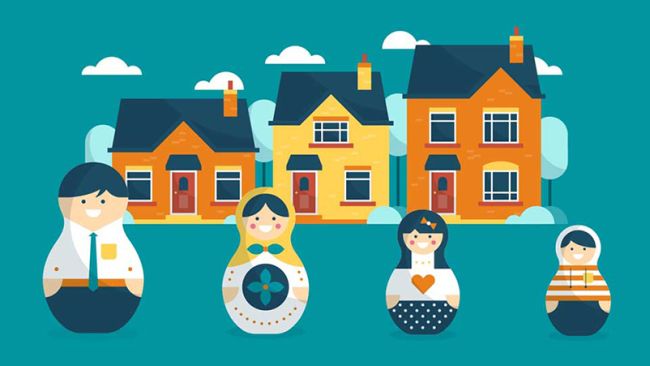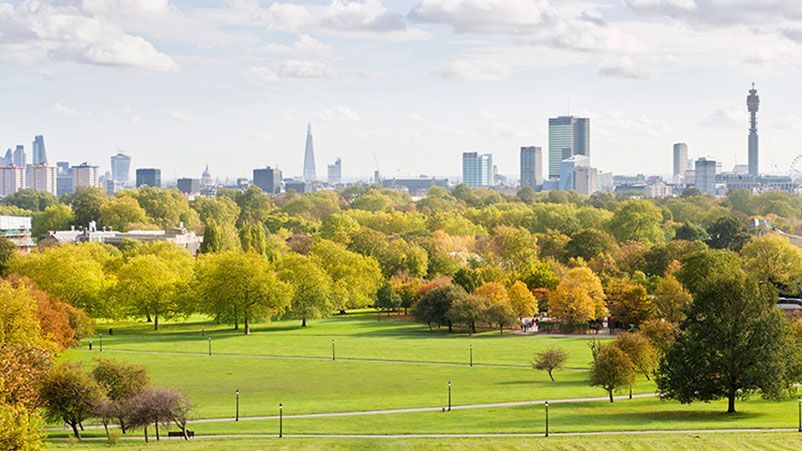
The most expensive UK cities for growing families
If you thought the days of strong competition for properties might be fading, consider the rise and rise of the three-bedroom house


Words Cherry Maslen
The huge surge in the capital’s property prices over the past decade is having a profound effect on where Londoners live and the type of housing needed to accommodate them. The challenge for first-time buyers is well known, but there is an equally significant problem for second-steppers – those wanting to move from two-bedroom flats to three-bedroom houses because of their growing families.
Exclusive research commissioned by Strutt & Parker (shown below) reveals the difference in price of moving from a two-bedroom flat to a three-bedroom house across 32 London boroughs. The gaps are enormous in some boroughs – over £1.3 million in both Westminster and Kensington & Chelsea, £636,000 in Camden and £445,000 in Islington. But there are also some encouraging surprises, most notably the comparatively narrow gap of £47,278 in Greenwich, making the leafy riverside borough the best value location for growing families.
Best-value London boroughs for a growing family
Showing cost difference between 2-bed flat and 3-bed house
Most expensive London boroughs for a growing family
Figures based on the average price of a two-bedroom flat and a three-bedroom house July 2015-June 2016
Data provided by Rightmove/analysis by Strutt & Parker
‘It’s interesting that Greenwich is the only inner London borough that isn’t at the bottom of the affordability list for moving from two to three bedrooms,’ says Stephanie McMahon, Head of Research at Strutt & Parker. ‘Of course this doesn’t mean that Greenwich is cheaper than anywhere else, just that the jump up to three bedrooms is easier.’
Stephanie points out that at least part of the reason for this is the diversity of housing stock in Greenwich, which has a higher proportion of terraced and semi-detached homes (where three-bedroom properties are likely to be found) than many other boroughs. It also had a high proportion of council housing, much of it now in private pownership, which increases the choice for buyers.
After Greenwich, the boroughs with the narrowest price gaps for second steppers tend to be in East London, such as Newham and Barking and Dagenham, which is already being targeted by younger Londoners looking for affordability as both renters and first-time buyers.
The lack of suitable family housing in most London boroughs has implications beyond increasing prices for growing families, who are competing for limited stock. It also affects the city’s wider economy by raising costs for business.
Most obviously, according to the Centre for Economics and Business Research (CEBR), the surge in London house prices has had a direct impact on salary bills as employees expect higher incomes to compensate for the lack of affordable homes.
But there are also less obvious cost implications. For example, commuting times have increased over the past decade as growing families have moved to the edge of the city and beyond in search of bigger homes. This has significant financial implications for the London economy, with the CEBR estimating that productivity lost due to commuting, including train delays, and fatigue from longer working days is worth £440 million a year.
So what does London need to do to become a more family friendly city? Building homes targeted at second-steppers is one strategy developers should be considering.
‘Clever new-build design will have a big part to play, and as extra floor area costs more to build, so efficient use of space will be paramount to keeping costs down,’ says housing market analyst Miles Shipside, director of Rightmove. ‘Architects need to be not only creative but scientific and super cost-conscious in their designs. The frustrated potential second-stepper generation needs help with internal layouts that create an extra bedroom and living space.’
Charlie Willis, Head of London Residential at Strutt & Parker, agrees and points out that creating more accommodation out of less floor area should become far more common. ‘We don’t want to create rabbit hutches, but we need flexible space,’ he explains. ‘We could take some of the technology we’ve seen in offices and retail and use it in homes, such as moveable walls that reconfigure living spaces as families grow.’
Shared equity schemes, currently limited to first-time buyers, could also be extended to second-steppers, giving the option to part-buy and part-rent on the way to achieving full ownership of a family home.
However, growing families need more than just houses. To attract second-steppers to any area, the right infrastructure needs to be in place, which means good schools, health services, parks and green spaces.
‘There are a lot of areas in London full of towers of two-bedroom flats, but these enclaves are not sustainable as communities,’ says Stephanie McMahon. ‘It’s harder for developers to build for families because more facilities are needed, but if we’re going to increase the density of family housing we need to find a way to deliver for this important demographic.’